#GM tools
Text
Some astronomically unusual habitable worlds
Or, weird star systems that include a habitable planet, or at least one in the habitable band that could be terraformed, on the assumption that systems you can live in are more interesting than those that can't. "Habitability" is a bit of a stretch here; a habitable world could be anywhere from "it has an evolved biosphere with plants you can eat" to "an airless rockball, but if you pelt it with enough comets, put a biosphere in place, maybe you could eventually live there" or perhaps one where someone already did the hard part; that part is deliberately vague depending on how hard your sci-fi is.
Throw these on a d10 or 2d6 table or something; stick "planet orbiting a yellow dwarf" and "moon of a gas giant orbiting a yellow dwarf" in the most common spots, and you're good to go. This is a draft of a setting design generator table I might use. I might use it for Stars Without Number or I might use it to fill in stuff about under-developed systems in BattleTech, for instance. None of these have precursor aliens so that they can be used in settings that don't include them (if you add precursor space habitats to your star system tables, you can get pretty wild and I do fully encourage that), though one of them assumes humans have been at this space colonization thing for centuries. Likewise, this doesn't include anything that requires Weird Space Magic, like hollow worlds with an antigravitational inside and an inner pseudosun. If that exists in your setting and you're building a Weird Planets table then by all means put that in.
If you want to follow real astronomical commonality, small dim stars are much more common than big bright ones. I'm not an astrophysicist, though, and I haven't done the math to demonstrate that any of these are physically possible.
A world in a distant orbit around a bright star. Because luminosity increases with mass faster than gravity does, this world has a very long orbit; seasons might last decades. Depending on the role solar gravity plays in your setting's FTL (if any), these planets might be faster to reach coming out of FTL.
Converse to that, circumbinary planets (with two closely-orbiting stars at the center of the system) will have shorter years in the habitable band, since the mass is divided among two separate stars leading to much lower luminosity for the same mass
A world in a spread-out binary star system (the planet is closer to its primary than the other star is). The other star shines brightly on it. In the right time of year, there's never a night dimmer than a full moon.
A spread-out binary system with two separate habitable worlds, light-hours or light-days apart
A planet in a binary system with two stars of greatly different brightness, but because of relative distance they appear similar. It's tide-locked to the dimmer star, giving it an uninhabitable hot side and an inhabitable side with a day/night cycle.
A world in a highly eccentric orbit around an extremely bright star. In time, it will fall in to the inner system and its seas and atmosphere will boil away, but that's maybe a century or three out
That same world, coming out the other side. It might have scorched ruins on it, left behind when it was abandoned. It's on its way to the outer system, where it will freeze for a thousand years or more.
A planet that distantly orbits a black hole or neutron star, its atmosphere restored after the supernova burned it off. At the rate its primary is radiating (remnant heat/accretion disk), it's exactly in the habitable band, for now.
An outlying "moon" of a gas giant. Instead of orbiting its primary properly, it orbits at the L4 or L5 Lagrange point
A binary planet in a low orbit around a red dwarf. Their tidal forces on each other are the only thing that has kept them from becoming tide-locked to their primary.
34 notes
·
View notes
Text
d66 Ways to Explain This Player Character’s Brief Absence
Aw beans, one of your players couldn’t show up to tonight’s game. Here’s 36 ways to explain why their character is missing just for this session! Roll a d66 (rolling one d6 for the tens-digit and another d6 for the ones-digit) or choose an option that makes sense for your situation.
For brevity, “PC” will be used in place of the missing player character’s name.
11: PC had previously sworn an oath to a wizard they were indebted to, granting the wizard one-time power and authority to temporarily summon PC to them whenever they require their aid. The wizard is cashing in right now.
12: PC found a cursed scroll which temporarily turns them into an incorporeal spirit, forced to haunt the other player characters undetected until they learn some moral lesson the scroll wants them to learn.
13: A faerie spirit on a quest for revenge mistook PC for someone else and stole them away in the night. They’ll return PC once they realize their mistake.
14: The battle of two quarreling chronomancers blew through your location, and PC fell into a time-rift left in the wake of one of the wizard’s attacks, sending them into the (near) future.
15: Aliens abducted PC but will return them when they prove too difficult to contain/experiment on.
16: PC finds themself trapped in a time-loop, and eventually discovers that they only way to escape is to avoid contact with the other player characters for the duration of the loop.
21: PC overheard something the other player characters said about them out of context and misinterpreted it in a way that greatly upset them. They sneak away to abandon the group when no one is looking but return upon realizing it was all a misunderstanding.
22: PC has an important family (or other personal) matter to attend to that requires their swift response, as it involves legal recourse surrounding the disappearance of someone close to them. They will return once it is settled.
23: A scatter-brained wizard’s apprentice studying teleportation magic accidentally switches places with PC, teleporting them to their mentor’s tower an impossible distance away. The apprentice thinks they can figure out a way to swap back with PC if given some time on their own. They hope PC hides in their study until they do – their master tends to fireball intruders on-sight and ask questions later.
24: PC has been possessed by a ghost, who will return control of their body to them once they complete some task the ghost wasn’t able to finish before they died.
25: PC stepped away to refill their water, and got turned around on their way back. They wandered around lost a while, but will find their way to the other player characters eventually.
26: A faerie spirit decided they fancied PC and whisked them away to the faerie realm in an attempt to seduce them. They’ll return PC once they realize they aren’t their type.
31: An enterprising minor demon wants to strike a bargain with PC and teleports the two of them to the top of a tower in an attempt to show off. However, the demon’s pitch is not going well, especially when it’s revealed they lack the power to get them both back down again without resting a while first.
32: PC is called in for jury duty, and either has to serve their time or go to the local magistrate to appeal for a waiver.
33: PC ran into an old friend and went to catch up with them over some drinks. However, the two of them got held up by some of the friend’s newest adversaries.
34: PC is avoiding the other player characters while they prepare a surprise for one or all of them – a gift, or a party to commemorate a certain event like an anniversary or holiday.
35: PC is troubled by recent events – related to the group’s adventures, or external to them – and wants some time alone to clear their head.
36: PC has been haunted by dreams of a symbol in a dark room. They spot this symbol on a stray cat and can’t help but investigate. It seems to be leading them somewhere, but only if they follow it alone.
41: PC is visited by the restless spirit of a friend long gone. Their ghost wants to tell PC a secret – a secret that they must take to their own grave – and leads them away from the rest of the player characters.
42: PC has been struck by sudden inspiration for a work of art, and they simply must bring it into the world before the inspiration fades.
43: PC received an ominous warning from a fortune teller to stay away from [events of today’s session] and is keeping a safe distance just in case.
44: PC is having a crisis of faith in themselves after recent events and takes off on their own for a while until they reassure themselves of their skill. Training montage optional.
45: PC is sent a threatening message by one of their adversaries telling them that if they don’t leave the group, their allies will be made to suffer for it. They leave, believing it to be some heroic self-sacrifice. They return once they realize they are all stronger together, and only with each other’s help can they defeat the adversary’s threat.
46: PC tried to follow an “astral projecting for dummies” guide as a joke, but ended up separated from their body until they figured out how to stop.
51: PC ran afoul of a witch years ago, who tried to curse PC with eternal sleep. However, the witch got their arcane verb-tenses mixed up. So instead, PC was cursed to sleep through a specific date and time. That date is today.
52: PC is shown something that causes them to doubt if their cause is the right one, and leaves until they can find out the truth. They return when what they were shown is proven to be a fabrication by their adversary to mislead them.
53: PC leaves the group because they feel their contributions aren’t appreciated enough. They return after some self-reflection reveals they weren’t feeling unappreciated, they were feeling jealous.
54: PC is feeling extremely ill today. If your group has access to magical disease relief, specify that such relief will still take time to affect whatever sickness has befallen PC – it will just relieve some of the pain in the meantime. Until then, they require rest.
55: PC must take a day off for an important religious observance of their faith.
56: PC received a message from a character they flirted with in town, inviting PC to come visit them for some fun. They sure are taking their time coming back.
61: A minor celebrity from one of PC’s niche interests is going to be in town sort-of-but-not-really nearby, and PC just can’t miss this opportunity to meet them!
62: PC accidentally stumbled into the secret hidden lair of a C-list villain. It will take them a little bit of time to escape on their own.
63: PC saw a rare, elusive mystical beast, prized by many, such as a unicorn. They chased after this once-in-a-lifetime opportunity and will return very disappointed.
64: PC is in a sour mood after accidentally breaking a sentimental keepsake, and just wants to be alone for a while.
65: PC insulted a wizard, who responded by turning PC into a pile of rats. Rats, plural. We’ll have to collect all of them up before they can be changed back.
66: PC is just feeling soooooo eepy. Little nap.
116 notes
·
View notes
Text
I am in all things,
Each shade and hue.
Invisible,
Yet visible too.
You only see the surface
When I see you.
A riddle. Probably thought I'd put the answer down here, didn't you. But not yet. If you have a guess stick it in the tags.
24 notes
·
View notes
Text
So, here’s the thing... Your RPG has a character fantasy that it’s trying to play out, right? There’s a flavor that’s going to be baked into the mechanics to try to make it easy for a player to express and be immersed in their character within that fantasy. There is a LOT to discuss on the subject, but I want to zero in on one aspect that can really make or break the fantasy for your players: success and failure.
Whether it’s tests of combat, social, exploration skills, or something else entirely, most RPG systems will determine success or failure by a die roll. It can be a d20, 2d6, 2d20, 1d100, or some truly wild systems with fists full of specialized dice, but we can boil them all down to mathematical probability. Ignoring modifiers and target numbers, if a person needs to roll a 11 or higher on a D20, they have a 50% chance of succeeding. Duh, right? But really think about what that means... In that scenario, the character’s odds of success or failure are even. Do the thing twice, probably fail once and succeed once. A coin toss. It’s just a matter of pure luck at that point. Certainly not something you’d plan on or expect to work!

Contrast that with having to roll a 3 or higher on a d20: 90% chance of success. Solid odds that you’d feel pretty confident with, right? Sure, 10% isn’t that unlikely, but you’d bet on succeeding. You might even expect that to work. You could form a plan around a 90% chance of success. A failure would be a bit of a shock and maybe cause a significant disruption.
Now imagine you only succeed if that d20 shows a natural 20. 5% chance. It ain’t happening, friend. You’re rolling and only divine intervention will save you. Even before the die finishes clattering, you’re expecting and maybe even preparing for the consequences of failure. Should you succeed though... Whole table goes wild. Cheers, backslapping, and probably the formation of a story that you’ll all remind each other of for decades to come.
So what, right? Maybe you’ve never considered the math behind the die rolls, but this is pretty basic stuff! Stay with me for a bit longer as we circle back to the fantasy... Imagine you’re playing a game about spies and you’ve showed up to the table with an expert lock picker. Your character is recognized as an expert in the field, with years of training, experience, and education under their belt. The game starts, and your GM describes a fastfood joint’s general manager’s door in your path as locked by a fairly standard, hardware store quality lock. You get ready to roll to pick the lock, die cool in your hand. The GM gives you the target number... And after doing some basic math in your head, you realize that, even with all of your character’s expertise and tools, your odds of success are 50%. How’s your fantasy feelin’ about then? Do you feel like your lock picking expert is in control of their fate? Or are they at the mercy of the fickle whims of capricious luck? Do you believe in this world where an expert has a coin toss’s odds of defeating this bargain bin lock? I’ll bet not. It’s as ridiculous and jarring as the odds of a 72 year old librarian with aesthma successfully putting a Hell Angel’s biker into an arm-bar hold 90% of the time.
Take a look at the range of difficulties in your game, then compare that with what a typical player character is capable of. What are the odds of their success for a normal or difficult task? Will your experts generally be kicking around that 80-90% chance of success? Or something closer to 50/50? Is there a substantial difference between your experts and untrained characters? This might seem boring, and probably will need the help of a website for dice odds for non-d20 systems, but it is worth the effort I promise you! With this knowledge, you can better craft your game session or system to present the fantasy you want the players to experience.
Here’s a quick and dirty guide:
If players can reasonably reach the 80-90% chance of success for most common tasks, you’re looking at an expert fantasy. Players want to see their character blow through mundane challenges like Superman through a wooden door when their character’s specialization comes into play. This isn’t to say ALL challenges should be simple; far from it! Players crave challenge, particularly for their character’s specialty, so be sure to include situations that will push their character to the limit. If our lockpicking expert is called upon to open up a bank vault in 10 seconds or less, while their allies battle enemy spies the next room over, and the whole mission is on the line, it is perfectly reasonable for the task to be 50/50 odds (or worse!) for the expert and flatly impossible for untrained rubes to attempt. That’s where the expert fantasy shines: difficult tasks with high stakes that only the specialist can possibly succeed.
If most checks for your players are going to be in the range of 40-60%, and doubly so if the difference between an expert and a normal character is minimal, you are in for slapstick or a lot of hot-or-cold rolling. If a magic item requires an Arcana check with a target number of 15 (a hard challenge as the game states), a 1st level genius wizard with training in arcane lore for a total of a +6 bonus to the check and an intelligent fighter with no Arcana training has a +2, that means the wizard needs to roll a 7 or higher and the fighter needs a 13. The wizard has a 70% chance of success while the fighter kicks a 40% chance. The difference between a lifetime of magical study with a genius intellect and some smarter-than-average newbie is 30%. There are, almost certainly, going to be situations where specialist characters will fail a fairly mundane task while their much, much less expert allies will pass.
Short note, I think a lot of 5e’s math problems can be fixed by doubling Proficiency bonuses, increasing harder DCs by 5, and reworking Expertise into something that ignores Disadvantage or grants Advantage more often. I’ll show my work if folks are interested later.
Lastly, if your characters expect failure more than 70% of the time... Whoooo boy, you are doing something weird! Either the game is based on failing-forward mechanics, something where only the truly lucky or exception survive, or dealing with failure is the whole point. Children With Wands is the only game I’ve seen that makes this fun, but I’ve met some truly special individuals who play early editions of Warhammer Roleplaying specifically to gleefully mulch their way through character after character. I don’t judge.
Hopefully this gave you something to think on if you’ve gotten this far. Whatever your fantasy preference, I wish you happy gaming!
#gm tools#RAD New World is squarely in the Expert Fantasy slice if anyone is wondering#so yeah... My biases are showing
44 notes
·
View notes
Photo

Adventure Archive TTRPG assets for May!
This month's TTRPG assets are up in the Adventure Archive, a collection of ✨377📷 items! Patrons & ko-fi members $5 and up get access to the asset archive for their games & can make monthly requests for ones they'd like added!
https://patreon.com/TriaElf9
https://ko-fi.com/triaelf9
21 notes
·
View notes
Text
The Bloom

I've been running a plague storyline in Blades in the Dark. 'The Bloom' manifests as flower petals growing out from around your neck, between your fingers and toes, armpits, between your legs etc. The petals multiply and multiply until you finally just... blow away. No body, no ghost, you just fall apart. Petals in the wind.
You know you're close to fully 'blooming' when the floral scent that's been all you can smell for that last few weeks changes to smelling like rotting meat.
Attune to the bloom and you might brush against a strange kind of consciousness. It's not so much a mind as it is a psychosis in isolation. A kind of memory-vacuum. If the player received consequences from their attune roll, they get this information at the cost of a trivial piece of their memory (like where they live, or their father's first name).
The Bloom eats memories.
25 notes
·
View notes
Text
There are no hit points on the high seas
Nothing fills me with more dread than seeing a statblock for a sailing ship in a game, overflowing with hundreds of hit points. And then a smaller but still pretty big number dictating a damage threshold. (I'm looking at you D&D and Pathfinder.)
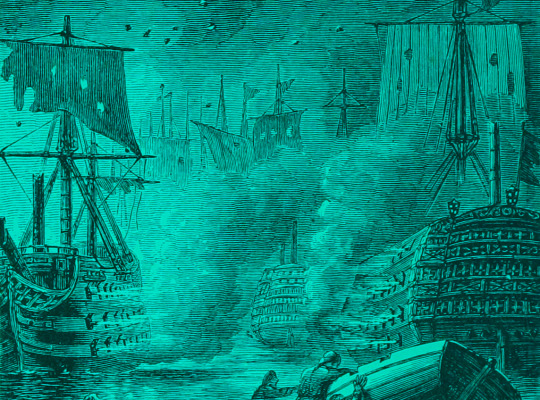
As a GM, I don't want to deal with running a ship encounter where I roll a bunch of dice and subtract them from a really big number. Treating ships like glorified HP sacks feels a like a huge design mistake.
Here's how I approached a naval encounter recently in a D&D 5e session. I wanted the battle around the characters to be fast-paced and dangerous, without it turning into a slog if the players decided they wanted to try and sink the enemy ship.
Save vs Sinking
Whenever a *significant* attack hits a ship, instead of taking damage, it has to roll a saving throw (1d20 and roll higher than the target number) or begin sinking.
For our game, a significant attack meant ship-to-ship weapons, powerful magic, and ramming. The saving throw starts at 1, and it goes up after each successful save.
Bolts +1
Cannons +2
Ramming +1d6
Fireball +2d4
It's on fire +1 (each round)
Those values are arbitrary and are informed by my own personal taste. Tweak them as you like, but there's no exact science to it. Just know that if those numbers are too high, one ship will sink the other very quickly.
Roll these saving throws in front of the table - never behind the screen. The ever increasing number represents the ship getting closer to springing the leak that will sink it. Your players will feel the suspense in the air.
This mechanic also gives you an at-a-glance marker of how damaged a ship is. If the DC is left at 7 at the end of a fight, it has 13/20 hull integrity remaining, or 65%. (hmmm looks like I reinvented Hit Points again)
Side note: This could be done using a d100 instead of a d20 to match neatly onto percentages. You’d have to use higher numbers.
For simplicity's sake, a ship doesn't add anything to the saving throw. If a ship is particularly sturdy, roll the save with advantage. If it’s a weaker noncombat vessel, roll with disadvantage.
We're Sinking!
Okay so a ship is going down. The hull cracks in half after a successful ramming. Fire spreads across the mast and wooden splinters rain from above after a fireball lands. Multiple ballista and cannon ball holes rapidly fill the cargo hold and lower decks with water. Now the encounter becomes a mad-dash to flee overboard or take the enemy ship.
Throw realism out the window - ships should sink FAST for the sake of drama. Keep the target number from the ship's failed saving throw and add 1d6 to it each round. And keep increasing the number after successful attacks. When that number reaches 20 or higher, the ship is sunk beyond repair. with most of its hull cracked beneath the waves.
Why Saves?
Using these saving throws adds a level of unpredictability to ship combat that makes encounters tense and deadly. And I think it ratchets up suspense and dread nicely. Your ship will go from a background character to a vital set-piece.
I do think hit points can work for scenes that center on ships by themselves, without zooming into individual characters. If each person at the table is roleplaying as a ship and their whole crew, giving a ship hit points seems more sensible. But if every crew member also has their own block of hit points on the same scale, the logic of the scene really begins to break down for me.
Would 10 player characters combined like Voltron have the same hit points as a sailing ship? (Wait, don’t answer that... there’s an absurd game idea there...)
Tldr; nothing fills me with more dread than a big block of hit points - nothing fills my players with more dread than a number they need to roll above, slowly ticking upwards.
Misc thoughts:
If you’re looking for unpredictable danger, you could port this to characters too, using different dice to make the saving throw to represent different levels of sturdiness between characters.
Writing this reminded me of Star Wars Saga Edition, a nightmare system with some space ships having thousands of hit points to compensate for player characters and smaller ships that have a hundred or more.
#ttrpg#tabletop rpg#ttrpg design#game design#tabletop games#dnd#gm tools#gm tips#roleplaying#tabletop#osr#josephines-design-thoughts
44 notes
·
View notes
Text




Graph Paper Printable
Do you need paper to make your D&D maps? Or maybe you just need some graph paper for you discbound notebook?
With this printable, you can print and punch the holes to make as many pages as you want in your notebook, or just use it as loose paper, or even use it digitally in your iPad or tablet. The grid is in 5mm.
The pack includes 4 layouts in A4 and A5 sizing, with margin for discbound punch-holes, and is prepared for 2-sided printing.
Purchase it here
2 notes
·
View notes
Text

What would you like to do?
#ttrpg#dungeon master#game design#world building#dm tools#gm tools#dnd#dungeons and dragons#pathfinder#dm advice#game master inspiration#dm tips#sly flourish#points of inspiration#ttrpg advice#fantasy
4 notes
·
View notes
Text
Communicating Your World
Creating a world is often the easy part, communicating it out to your players? A Whole different challenge! #TTRPG #DnD #Pathfinder
You’ve done it. You’ve built a world for your next campaign and you’re dying to show it off. Then things go sideways. The players aren’t asking the right questions. They aren’t engaging with your lore. Instead of following your world’s cultures and ideas, they’re defaulting to stereotypes, tropes, and so on from the base game. You put a lot of work into this, and there’s seemingly no payoff in…

View On WordPress
3 notes
·
View notes
Text
Have y'all tried our newest generator? It uses content from Cess and Citadel to create bustling city intersections.
Try it for yourself!
For example,at the intersection of Quillshank Terrance and Trifolium Alley you can find the shop Mrs. Sweetwater’s Fancy.
Mrs. Sweetwater’s Fancy accepts credit, with interest of course. Every surface feels like dried syrup.
Shopkeep: Dagden, plain and utilitarian. Had tongue cut out by enraged Noble.
Inventory:
Box of Nails
Oil, bottle
Cheese
Cloth measuring tape
Beer
Artifact: Chimney-Scamp's Hearth. A large and unwieldy hearthstone, riddled with sigils and pictographs of thieves robbing nobles and setting their estates on fire.

3 notes
·
View notes
Text
I’ll be at PAX Unplugged this weekend repoing @cloudcurio. I’m bringing a bunch of @mapcrow SIGNED prints and a MONSTROUS sample booklet. Stop by the PlusOneExpo booth #4223 say hi and pick some freebies up!
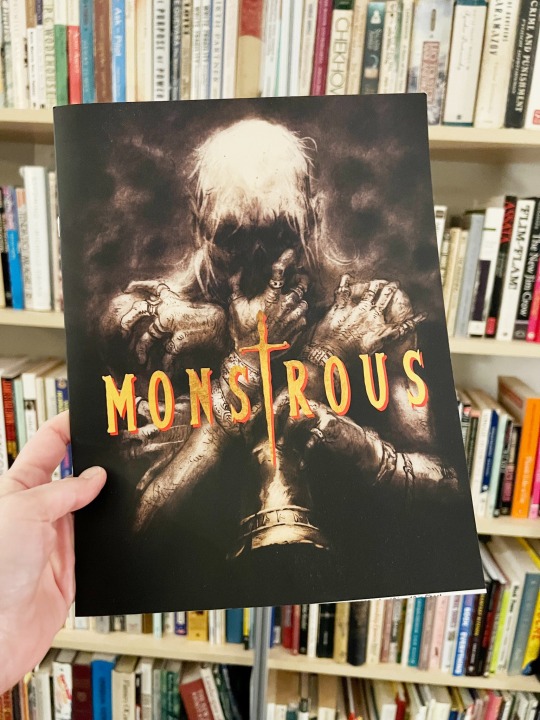
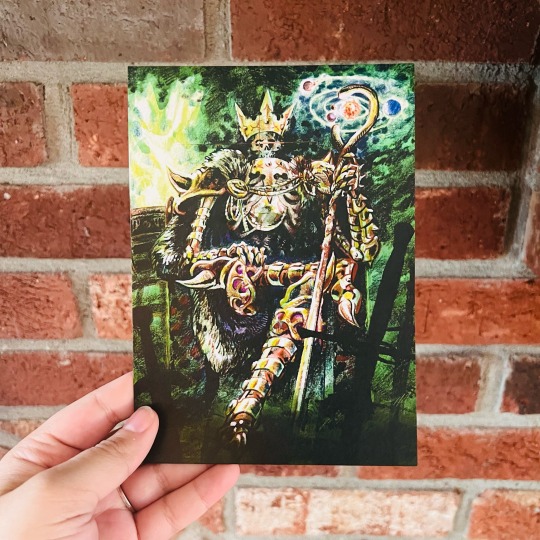
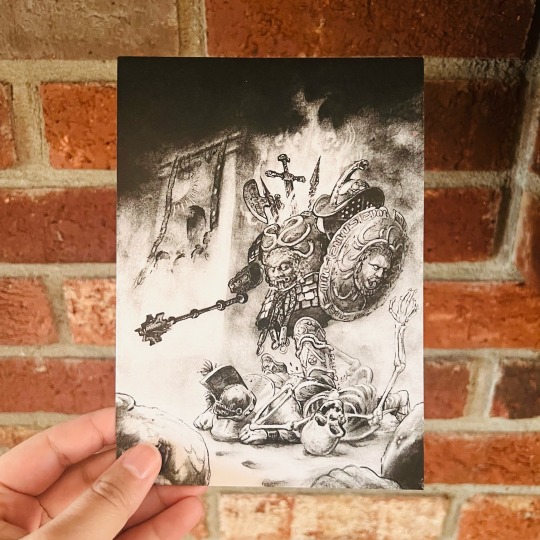
#indie ttrpg#ttrpg#map crow#cloud curio#monsters#d&d#artists on tumblr#illustration#dungeons & dragons#GM tools
1 note
·
View note
Text
Just did up a quick worksheet, mostly for myself, figured I'd post it up.
The idea is to cross over a few things:
get the small local vibe from hex flower
get the exploration aspect from a proper hex crawl
get the efficient use of detail from a point crawl
heavily encourage the use of landmarks
Anyway might fill out a couple myself if I have time!
0 notes
Text
The Feyscar Karma Table
Love it or hate it, Draumvollr has a (very simple) karma system you can use. There are no permanent effects as this is only intended for extra flavor in a world overflowing with magic and serves as a straight-forward method for GMs to utilize the Titan threat.
I've put the table under the cut but of course I must recommend checking out the link above if you want all of the deets. As with everything on this tag, feedback is encouraged! Making tables is not my strength and I'd like to work on that.
What is a Feyscar?
When a character is afflicted with any of the effects on this table, all successful uses of Detect Magic on them gives the user a glimpse of garish, jagged, marks gleaming white-hot that sting and burn at the eyes to view directly. Those who are brave or foolish enough to focus their study on this phenomenon colloquially refer to it as 'feyscarring' and the origin of this energy remains locked in mystery to them. This aura is not visible using Detect Good/Evil and diminishes when the effect wears off. Additionally, all effects listed have a 24 hour duration unless stated otherwise.
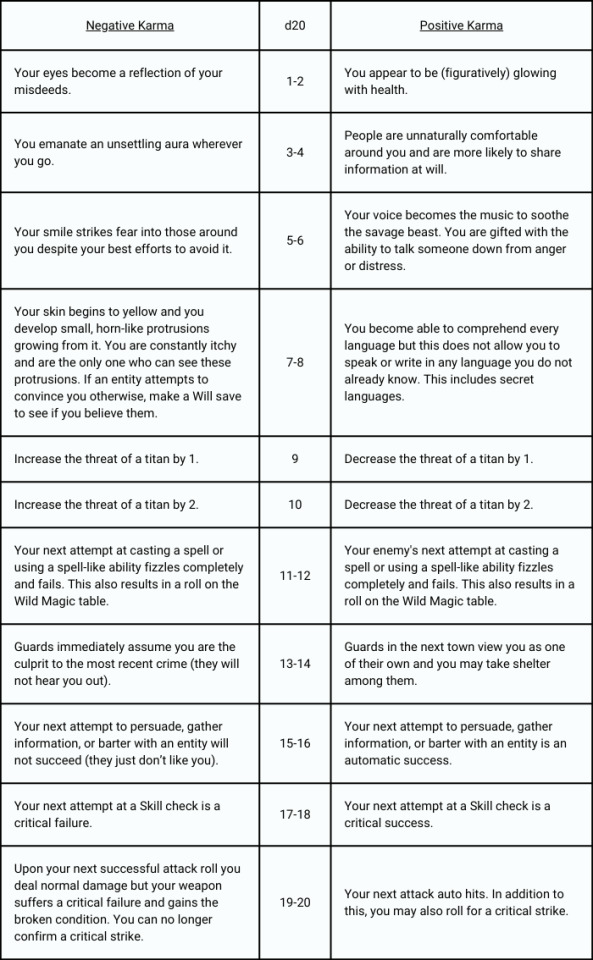
0 notes
Text
A bit of advice for newer GMs out there... Either find or develop your own rules for fires. You’re going to need them.
At bare minimum, be ready for what will or will not start a fire (and how immediately), how quickly fire spreads, and how much damage being in/near a fire causes.
4 notes
·
View notes
Text
301- The Impossible Tale
A special episode as we talk Kickstarters and what we look at for in a campaign. What draws us and what turns us off.
Find out more in a new Tales episode
for #TTRPG discussion.
I’m calling this episode impossible because I never expected it to come out. Here I talk with Adam of Force Majeure and Leslie of Heroes/Tales about kickstarters and what gets us to look at other table top RPGs.
(more…)
View On WordPress
#adventure#Advice#communication#Consent in Gaming#consequences#difficulty#discipline#Discussion#disruptive players#Fantasy Flight Games#FFG#Game Design#Genesys#GM#GM advice#GM tools#GMing#Heroes#House Rules#improvisation#Kickstarter#making a plot#Mando#Movie#narrative#narrative play#New GM#Planning#planning tools#Player
0 notes